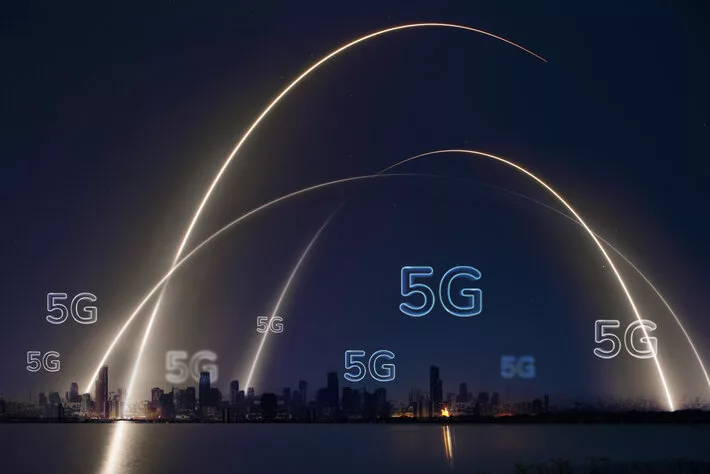Ericsson will deploy a wide range of Ericsson 5G Open Radio Access Networks products and formulas to support AT&T’s nationwide Open RAN ambitions in the United States.
The company will build a 5G network platform for AT&T, utilising cloud-native technologies built on O-RAN standardised interfaces – with industry scale, cost efficiency, sustainability, and high-performance top of mind. Through time AT&T and Ericsson will transform this to a cloud-native open network.
Ericsson will utilise its recently expanded 5G Smart Factory in Lewisville, Texas, for the production of related infrastructure for the deal. The factory’s products are labelled ‘Made in USA’ as Ericsson’s facility complies with the Build America, Buy America infrastructure laws Act.
In line with its R&D-investment-led company strategy, Ericsson has developed a broad range of sustainability-centred technology offerings to support its belief that future networks must be increasingly resilient, open, sustainable, and intelligent.
The intelligent and programmable capabilities will enable innovation such as rApps, automation, and network APIs to be built and exposed and in turn, realise the potential that 5G was designed for – creating new monetisation opportunities in the process.
Ericsson’s open architecture will act as a springboard for developers to innovate and drive use and business cases.
“High-performance and differentiated networks will be the foundation for the next step in digitalisation. I am excited about this future and happy to see our long-term customer, AT&T, choosing Ericsson for this strategic industry shift – moving to open, cloud-based, and programmable networks,” said Börje Ekholm, a president and CEO at Ericsson. “Through this shift, and with open interfaces and open APIs, the industry will see new performance-based business models, creating new ways for operators to optimise and monetise the network. We are truly proud to be collaborating with AT&T in the industrialisation of Open RAN and help accelerate digital transformation in the U.S.”
“AT&T is taking the lead in open platform sourcing in our wireless network. With this collaboration, we will open up radio access networks, drive innovation, spur competition, and connect more Americans with 5G and fiber,” said Chris Sambar, an executive vice president at AT&T Network. “We are pleased that Ericsson shares our support for Open RAN and the possibilities this creates for American digital infrastructure.”
TECHNOLOGY DETAILS
This will enable AT&T to accelerate the commercial introduction of Open RAN equipment and open network management solutions from multiple vendors, utilising purpose-built hardware and virtualised commercial off-the-shelf (COTS) hardware.
Ericsson solutions include:
- The latest generation Ericsson Massive MIMO and remote radios that are hardware-ready for the next generation of open-fronthaul technologies. These radios also lead to lower total cost of ownership (TCO) through their reduced weight, size, and power consumption.
- Next generation, Ericsson RAN Compute, was recently launched.
- Ericsson Cloud RAN solutions will introduce the shift to Open RAN architecture with open interfaces and disaggregation to enable new partnerships in new areas of the Radio Access Networks. It will also allow us to build RAN SW in a modular way truly building a horizontal connectivity platform.
- Ericsson intelligent automation platform (EIAP) will provide comprehensive multi-vendor, multi-technology service management and automation for the AT&T network. AT&T and Ericsson will jointly promote and utilise the open EIAP rApp Ecosystem with its marketplace and Software Development Toolkit (SDK) to accelerate rApp development and innovation for AT&T and third-party software providers globally. Ericsson will utilise its leading position in Open RAN standardisation to provide comprehensive support within the AT&T network for O-RAN Alliance SMO interfaces, including O1, O2, and A1 interfaces (in the non-real-time RIC) and encapsulate the R1 interface between the non-real-time RIC and the rApps.
Ericsson’s answers comply with the company’s commitment to reduce both supply chain emissions and power consumption by 50% by 2030.
In response to AT&T’s plans, Finnish telecom company Nokia said it is aware of AT&T’s plans to commit to an Open RAN deployment in collaboration with other vendors over the next five years. As a result, Nokia now expects revenue from AT&T in Mobile Networks will decrease over the next two to three years. AT&T accounted for 5-8% of mobile networks net sales year-to-date in 2023.
The already-announced action Nokia is taking to reduce its cost base is expected to partially mitigate the impact of AT&T’s decision. Nokia expects Mobile Networks to remain profitable over the coming years but this decision would delay the timeline of achieving double-digit operating margin by up to two years.
“Whilst the news from AT&T is disappointing, our Mobile Networks business has made significant progress in recent years, increasing our RAN market share and technology leadership,” Pekka Lundmark, a president and CEO of Nokia, said. “I firmly believe we have the right strategy to create value for our shareholders into the future with opportunities to gain share, diversify our business, and improve our profitability.”
Lundmark added that Mobile Networks “are critical to our global connected future and as I have said before the cloud computing and AI revolutions will not materialise without significant investments in networks that have vastly improved capabilities. Our customers can rest assured that we continue to invest in R&D and develop market-leading products for them.”
Comment on this article below or via X: @VanillaPlus






